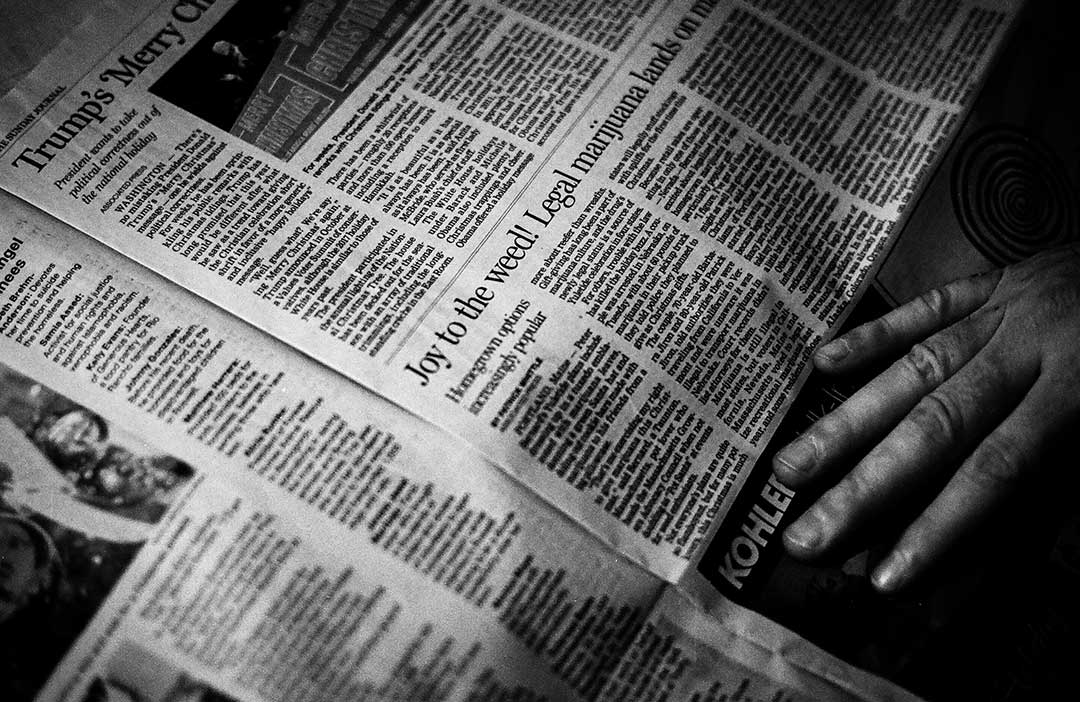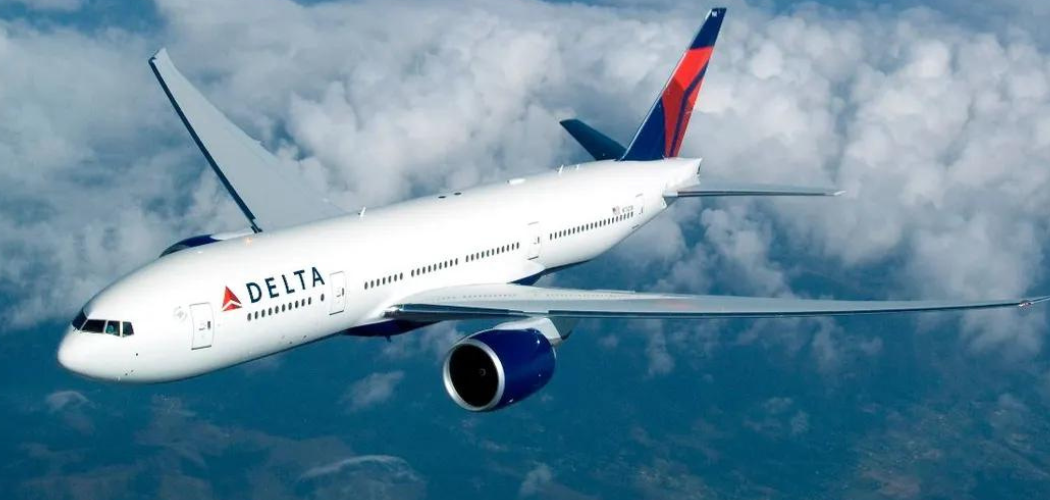An exclusive interview with Tim Ridgely, head of Order & Delivery, Paytronix Systems
The demand for Order & Delivery by restaurants, convenience stores, and QSR's was on the rise before Covid-19 came into our world and, as you might imagine, has spiked further since the virus changed the business landscape during the second quarter of 2020.
Paytronix Systems, a company which self-describes as delivering "the most advanced digital guest experience platform", recently made upgrades to its Order & Delivery platform, releasing news of five brands that have successfully used the service to ramp up their takeout business and online sales. The brands ranged from grocery and alcohol sales to a ghost kitchen as well as traditional restaurants.
The Wise Marketer had the opportunity to speak with Tim Ridgely, head of Order & Delivery for Paytronix, about how brands are adding innovative new services in the face of Covid-19. Tim shares perspectives about Order & Delivery that only a front-runner like he can do. As the founder of Open Dining in 2009, Tim was ahead of the curve in this fast moving area of ecommerce.

Here are highlights from our wide-ranging interview.
Wise Marketer (WM): Tim, thanks for joining The Wise Marketer today. Tell us a little bit about yourself.
Tim Ridgely (TR): I joined Paytronix in May 2019 and prior to that I was the CEO and founder at Open Dining, an online ordering provider. We were acquired by Paytronix last year.
WM: What's the history of Open Dining?
TR: I founded Open Dining back in 2009, so a shade over a decade ago, and grew the company from there. We joined Paytronix because the platforms fit together so well. Paytronix has a strong guest engagement focus. Our guest-facing online ordering system fit perfectly with this platform.
WM: It seems you were ahead of your time if you founded Open Dining in 2009.
TR: That was some time ago, and there were just a few others in the market at that time. We were in a phase when most of the innovation was coming from big corporate. For instance, Dominos built their own system and Onosys was powering Papa Johns. There were others too, like Seamless, Snap Finger (now rebranded), and it was very much a fragmented market. The focus was on consumer education. Things that are table stakes now like touting order and pick up via pizza boxes was brand new at the time. We had to educate restaurant owners too since some of them just didn't think delivery was that important. We know that's changed now.
WM: The acquisition of Open Dining by Paytronix is interesting. Paytronix must have considered building its own platform before deciding to acquire your company.
TR: Build versus buy was definitely a consideration. I suppose if you were looking at Order & Delivery as a commodity, then building can make sense. You see the same thing in POS systems, especially when a company wants to just check a box. Maybe you build a system which seems to work well and does the basics. But soon you notice that it is slow, clunky or feature limited. All sorts of issues can pop up longer term when the build was meant to just check that box. A company only has so many arrows in the quiver, and if you just need something basic you can buy a simple system. It really depends on individual strategies about which path they take.
WM: Overall, I would think it's daunting to start from scratch and build an online ordering platform today. Why do it?
TR: Right, especially if you're operating above the point of sale as Paytronix does. We deal with heterogeneous environments. We're not dealing with just one system like a Toast or Brink but have to work with 15 to 20 of them, and they all have to be fantastic because if they don't work, restaurants aren't happy. We want restaurants to be super happy, so we have to maintain all the interfaces and be certain they work well. This integration work is something we're very good at organizationally at Paytronix.
WM: Let’s talk about your product a bit. You not only deliver the essential elements of Order & Delivery, but I've also noticed some examples of a graphic-centric menu. When you put your consumer hat on, this seems like an added benefit for the restaurant owner.
TR: We worked really hard on developing not just a great interface but also a strong visual menu presentation. We're really focused on crushing the guest experience. Menu presentation and the ability to showcase your food with imagery is really important. There's a branding aspect of the product that contributes to a cohesive experience that translates into higher guest satisfaction.
WM: I know you have an agreement with Door Dash to do the delivery and that restaurants benefit from a pre-negotiated fixed fee for delivery. Is that something that you had already created before the acquisition?
TR: We did this afterwards. The ability for DoorDash to power deliveries is really important because it gives restaurants the ability to provide third-party delivery on a first-party platform. This way they can still control the guest experience while providing the service customers want. You've probably seen the converse where merchants using a first-party online ordering platform without an interface to third-party delivery. In that case, they only offer pickup, so they force the customer to go another route if they want delivery. Without a third-party hook up, the experience is not quite right. The customer sees "do you want pick up, click here". If you want delivery you have to click another button and it takes you to third-party delivery options. The result is a disjointed guest experience.
WM: What other advantages result from the relationship with Door Dash?
TR: The big issue is that the restaurant is able to keep the customer on its site and have an opportunity to start a relationship with that customer. The other way, you’re sending the customer to a third-party site while paying a commission for delivery, and you don't own that guest relationship. And you need to own that guest experience, right? Why would you send a guest to a marketplace from your own web property where they can see all the other food options in the world available to them? That's nuts. They're your customer. Why would you give them to anybody else? Food service is fiercely competitive, and you need to own your guests.
WM: So, keep going. what happens when orders originate from a third-party delivery app?
TR: Yes, that's the flipside. The restaurant gets an order, but all you know about the customer is that the name is Tim or Bill along with a phone number. There's no way to connect with them after the sale. One of the things I'm really excited about working with Paytronix is that we provide the entire solution stack. Engaging with your guests and building that relationship is extremely powerful. There's so much lifetime value from a guest when you can have that really strong and deep relationship. Let's not empower the marketplaces any more than they already are. They certainly have a place in the ecosystem but providing third-party delivery through first-party ordering is important for that reason.
WM: Do you do plan to add other third-party delivery options in the future?
TR: We're going to add more partners is the short version of that. Door Dash has been a fantastic partner and they provide great coverage and great service. So, everything works, but we also see demand for more options.
WM: The entire third-party delivery space is fascinating to me. Restaurants found a way to meet a big consumer demand without having to organize vehicle fleets or employ drivers. But there's a hefty commission that is paid on each order that impacts margins. A few big chains, like Jimmy John's have chosen to maintain their own fleet. Can you talk about the dynamics today?
TR: In online ordering, I don't think there is a silver bullet. From our standpoint, we're building out the product, but it's not like there's one feature that is "the thing". Needs vary by client and the interface experience is different depending what your concept is in the restaurant. There's just a ton of little things in the solution that make it amazing, for instance we include a feedback survey module that allows you to capture guest feedback early on in the process. If they have an issue with their order, they let you know about it. We give you tools to respond so that you can help guests out before they go to Yelp and Google and say bad things about you - or just never come back.
WM: This is great, and we haven't even touched on the subject of customer loyalty. How does Order & Delivery connect to your loyalty platform?
TR: Nice segue there. The Paytronix loyalty and ordering solutions work together seamlessly. If you go to place an order and register for an account, you can be enrolled in loyalty just like that. You don't have to go to some other loyalty page and sign up or do some weird unnatural stuff. It's just part of the solution. As one company we're able to deliver that value to the restaurant. Having the guest facing experience work together seamlessly is important. It's not like your guests are given a training manual on how to use your software. They have to figure it out. So, if it's unclear how they should go about redeeming a reward, you're just not going to have a very successful program, and you're going to lose to your competition. It is a little bit zero-sum game because we're all going to eat a certain amount and just some of that will be consumed off premises.
WM: Let's get back to delivery. How important is it for restaurants these days?
TR: I don't want to diminish the importance of first-party delivery over third-party delivery. And you brought up Jimmy John's which is a great example. You can absolutely crush first-party delivery if you want to, and it fits with your brand. Jimmy John's promise of "freaky fast" is to deliver a sandwich in five minutes. And they work hard on that. By bringing delivery in house you can achieve consistent quality. You have more quality control over the food and over the guest experience. There is a stack of things that are totally solvable if you want delivery to be a core competency for your restaurant.
WM: What about the economics of third-party delivery for restaurants?
TR: The commission model itself isn't the problem. It was based on the concept of incrementality, but that concept has been lost a bit. When a third-party salesperson came to talk to you circa 2010, and it was mid-afternoon and kind of slow, they would say "you still have your kitchen and wait staff working and your lease isn't changing. If we can get you two more orders right now, you will cover some fixed costs. Are you interested?" In this case the 18% Commission isn't a problem since you're tapping into this stream of guests that haven't seen you before. The problem is it's no longer incremental when you turn on Uber Eats, Grub Hub, Postmates, Door Dash, etc. and those orders become half of your off-prem orders. The third-party companies are like a fire hose. They are incredibly good at acquisition. But as that becomes a consistent and large percent of your business, the 33% commission hurts.
WM: In the future, will we see more growth in pickup or delivery?
TR: We have seen a lift since March for pickup platform-wide. There's been a replacement of dining-in by pickup. Delivery is popular and growing, but people are settling into the quarantine world for the long haul, and it may not be reasonable to order for delivery five days a week for most people. The delivery fees don't always fit into a household budget.
WM: If you look back to a time pre-Covid-19, you must have had lots of Order & Delivery clients in the pipeline. Since then, would you say your sales are composed more by those who accelerated their decision or those that decided they needed an "instant" solution to solve a problem?
TR: There are clearly different types of buyers. If you look at anybody that has over 100 units, they probably already had an online ordering solution of some kind. Maybe they have a solution but it's sub optimal, and they recognize that they need a new solution. In the mid-tier, there was a mix. The restaurant concept influenced decisions also. In fine dining, some who never thought they would need online ordering have seen the value as the result of the pandemic and needed to adopt something quickly. Now, we're settling in for the long haul and ecommerce and off premise orders will be more important than ever.
WM: How did you address the need for so many restaurants to get a solution in place quickly?
TR: We sat down as a company and asked ourselves how we can provide a solution as fast as humanly possible. The Rapid Launch program we just announced is the result. We can deliver something that's time optimized for you and then add a second phase to build more functionality out when you need it. So, it's Rapid Launch that can get you onboard quickly and then we can look at an integrated solution to go to the next phase.
WM: Where do you think the next meaningful innovation in Order & Delivery will be?
TR: Anytime you look at the future, it’s not one thing, it's lots and lots of little things that aggregate to create value. Ultimately, I think it's going to be about broadening our reach and helping restaurants own their digital presence. We look at things like menu syndication, controlling their listings on Google, and making improvements so they can control how guests engage with them. That's literally the tip of the iceberg. And, I'm always going to continue to talk about how well loyalty works in concert with Online ordering to be able to engage with customers on the terms they want.
WM: Thank you so much and we appreciate the time. I hope we have the opportunity to connect with you again in the future.
TR: Absolutely, it has been a pleasure.




